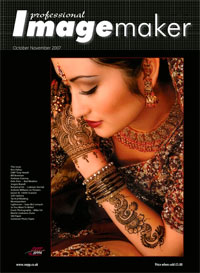articles/Photoshop/botanicalart-page1
The reproduction of botanical art - part 1 of 1 2 3 4 5 6 7 8
by Mike McNamee Published 01/10/2007
Mike McNamee discusses the complexities of a common task, the reproduction of flat art, with specialist printer, Lukman Sinclair
Dealing with difficult Originals
Reproduction of artwork is a topic we last discussed almost two-and-a-half years ago and we thought it timely to revisit the topic (and the people) to see how things have moved on. Providing reproduction, as a service to local artists, can be an additional income stream. It may be used to justify the purchase of new equipment or simply provide cash to support the cost of a printer for the weekly round of images that are part of general practice photography.
The rationale behind singling out fine art reproduction (ie the making copy prints of works of art) is simple. Many artists have a complete lack of computing knowledge (in particular) and photography (in general). Indeed, many of them see it as a badge of honour to profess total ignorance of things mechanical.
In the main, it is photographers who have the skills and equipment required to reproduce art and, most importantly, they have climbed up the learning curve to the extent that they can handle the job competently. Make no mistake though, these artists, who claim no knowledge of mechanics, will have keen eyes for colour and be extremely critical of your reproductions. You are going to need a good eye yourself, along with an in-depth knowledge of colour management and Photoshop colour adjustment before you can satisfy their needs - that, by the way, is why they came to you in the first place. If you have not got your own workflow boxed off and accurate, do not start attempting to learn your trade with artists as your guinea pigs!
There are a number of things to consider at the outset. If you are new into the photography business, do not underestimate the difficulty of reproducing flat copy of any kind. It is one of the most challenging topics around. As a beginner you may also wish to avoid the distraction of another skill to be mastered and be better served working on your core-business plan. Reproducing can be a small part of a business or a large one. At one end of the scale we have the local GP photographer helping a mate who belongs to the Monday painting class, at the other we have people such as GBM in Manchester who are the proud owners of one of the four Cruse Scanners we could find in the UK. This is a $170,000 piece of kit used by museums worldwide for reproducing art. It is like a scanner and camera combined, the lights move across the front of the original while the detector head picks up the information. The lighting may be set asymmetrically to pick out impasto details and brush strokes very realistically.
You are currently on page 1
- The reproduction of botanical art page 1
- The reproduction of botanical art page 2
- The reproduction of botanical art page 3
- The reproduction of botanical art page 4
- The reproduction of botanical art page 5
- The reproduction of botanical art page 6
- The reproduction of botanical art page 7
- The reproduction of botanical art page 8
1st Published 01/10/2007
last update 09/12/2022 14:51:52
More Photoshop Articles
There are 23 days to get ready for The Society of Photographers Convention and Trade Show at The Novotel London West, Hammersmith ...
which starts on Wednesday 14th January 2026





